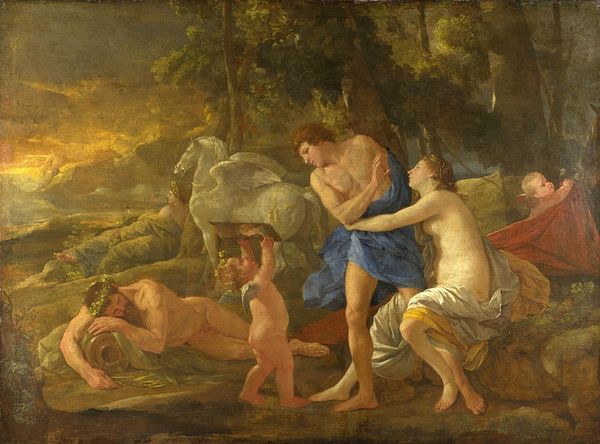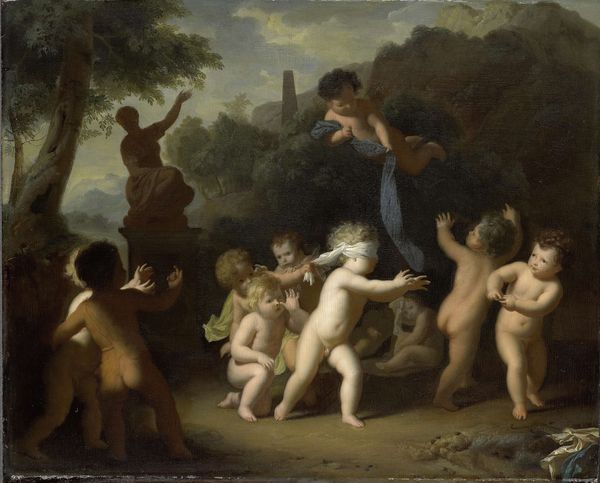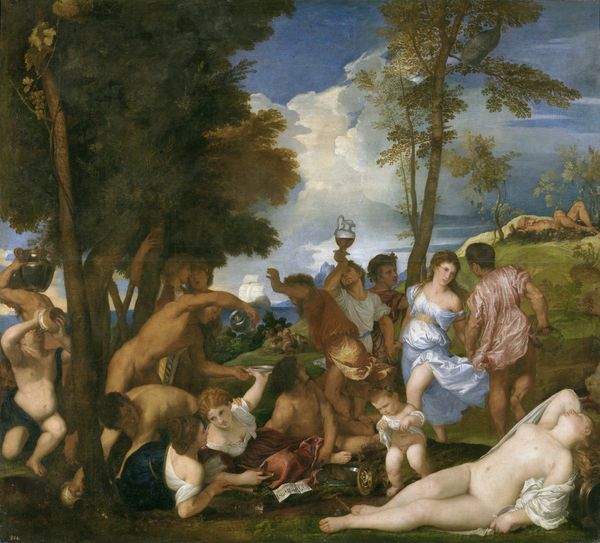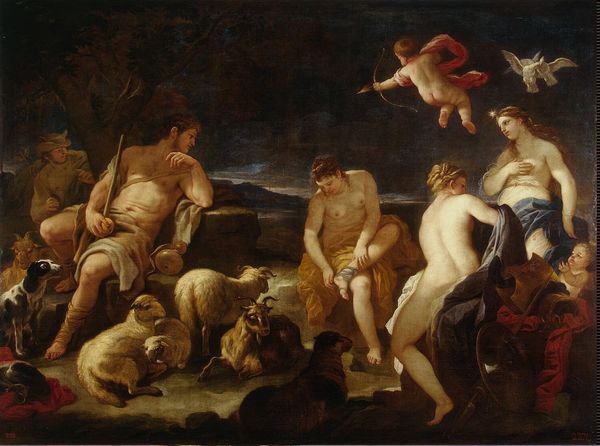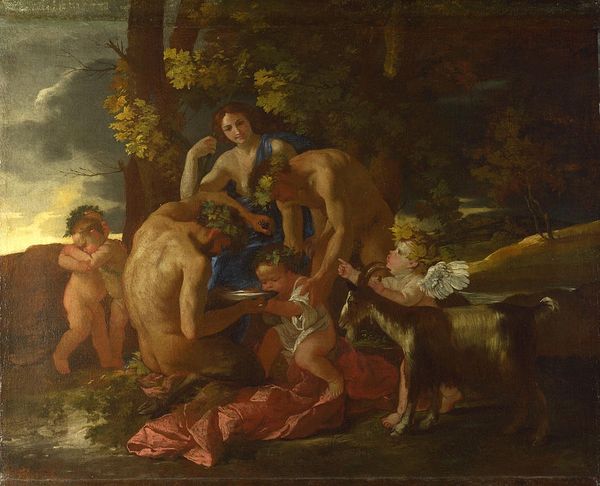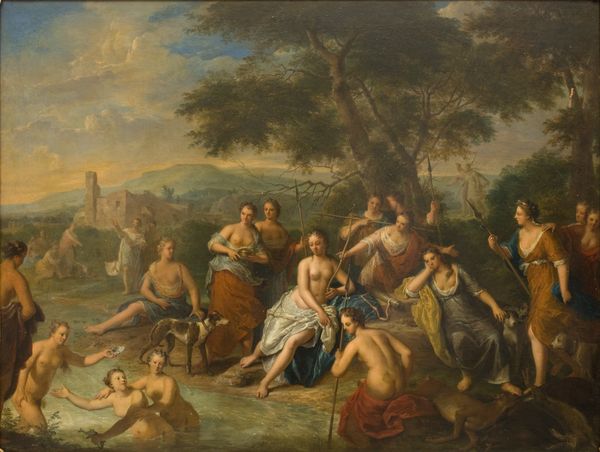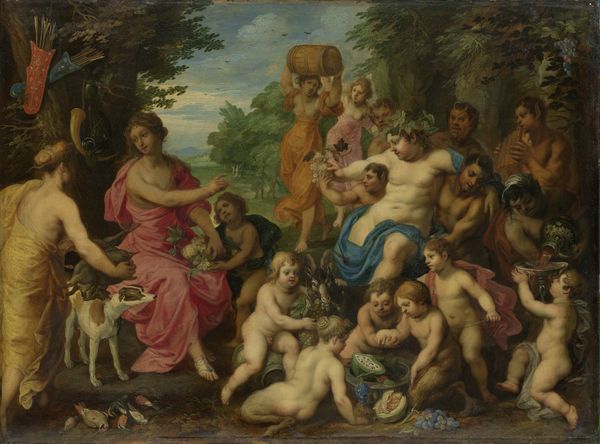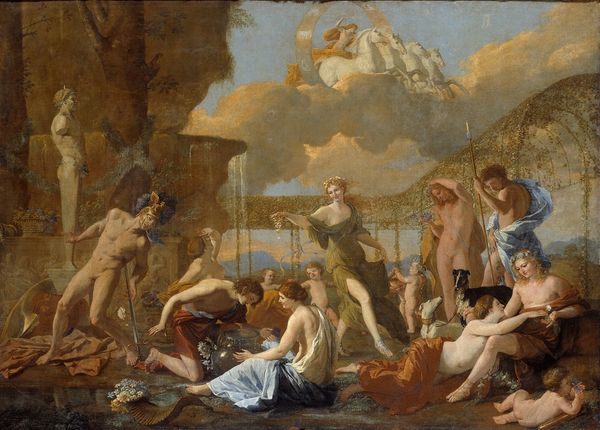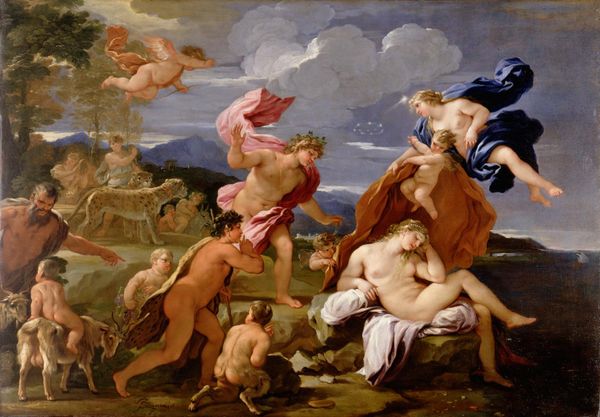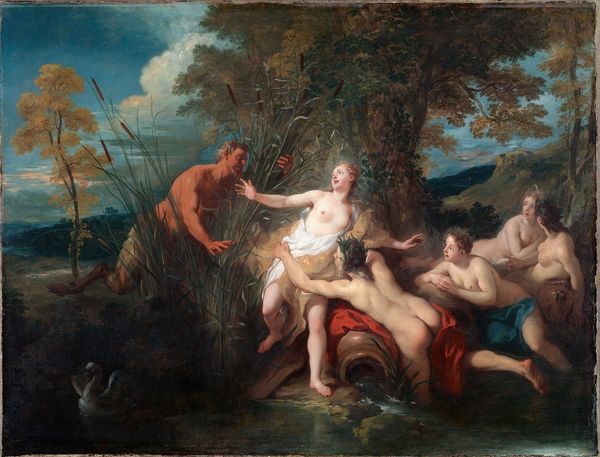
oil-paint
#
allegory
#
baroque
#
oil-paint
#
landscape
#
mythology
#
history-painting
#
nude
Copyright: Public Domain: Artvee
Curator: Poussin's "Venus and Adonis," dating from around 1628-1629, immediately strikes me as an image laden with symbolic meaning, each figure a carefully considered emblem within a larger narrative. Editor: The scale is substantial, and it’s really brought to life by the impasto—look closely and you can see how Poussin layers oil paint to sculpt light and texture, it’s hard to miss, it draws your eyes right in. Curator: Absolutely. The swan pulling Venus's chariot, for instance, isn’t merely decorative; it symbolizes love, light, and grace, often associated with the goddess herself. Notice how the cupid-like figures seem to toy with the swan, too? The relationship suggests light-heartedness and levity associated with romance. Editor: But consider the practical realities. Where did Poussin source these pigments? The ultramarine blue likely came from lapis lazuli, a valuable and labor-intensive commodity traded across long distances. The ochres and earths, are locally sourced or were those pigments imported too? And the brushes—how did the availability and expense of certain hairs impact Poussin’s brushstrokes? These material constraints shaped his artistic choices as much as the symbolic ones. Curator: A fascinating point. And speaking of choices, let’s not overlook the postures of Venus and Adonis themselves. The reclining Venus gazing up at Adonis holding the hunting spear, almost in protection, hints at foreboding and vulnerability of her beloved. Editor: Precisely! And that dog in the foreground, with his beautiful auburn coat rendered so precisely through layers of glazing, it’s also indicative of wealth and status within that social setting. The raw materials and craftsmanship spoke directly to the social class and potential patrons. Curator: Indeed. Looking closely at the cupid children surrounding them is almost as crucial as reading a medieval Book of Hours. Their presence underscores themes of love, death, and the cyclical nature of human existence. Editor: So while these allegorical figures may stand apart from our mundane lives, there’s always been very down to earth labor in sourcing these very precious, highly processed materials and making such artworks. That material production carries the artist and maker in their wake, doesn't it? Curator: Absolutely, acknowledging these layers brings forth greater understanding. Editor: It is a window, isn't it? Into production practices of its day.
Comments
No comments
Be the first to comment and join the conversation on the ultimate creative platform.


